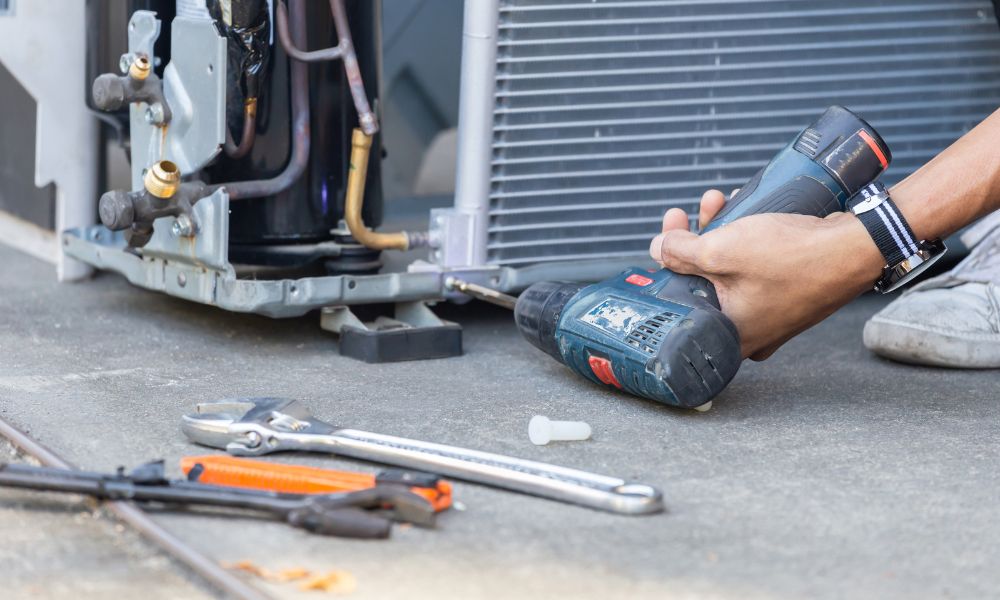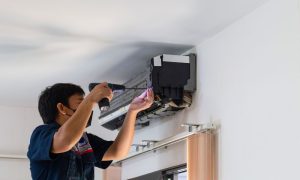Are you tired of sweating through the summer heat because your air conditioning unit is on the fritz? Or perhaps you cringe at the thought of expensive repair bills from calling in professional help? Fear not, as we delve into the world of DIY air conditioning repair. Whether you’re a seasoned handyman or a complete novice, this article will guide you through the process of troubleshooting and fixing common AC issues. By following our step-by-step instructions, you’ll be able to restore cool comfort to your home without breaking the bank.
Understanding the basics of air conditioning systems
Repairing air conditioning systems can be a daunting task, but understanding the basics of how these systems work is crucial for successful troubleshooting. It’s important to remember that air conditioners rely on a combination of components such as compressors, condensers, evaporators, and refrigerants to cool the air. When it comes to repairing these systems, it’s essential to have a good grasp of how each component functions and interacts with one another.
One common issue with air conditioning systems is the loss of refrigerant, which can lead to reduced cooling capacity. However, identifying and fixing the source of the leak is just as important as adding more refrigerant. Additionally, regular maintenance and cleaning of filters and coils can help prevent clogs and blockages which could lead to system failure. Taking a proactive approach by scheduling routine inspections can ultimately save time and money in the long run.
As technology continues to advance in the HVAC industry, newer air conditioning units are equipped with smart features that allow for remote monitoring and diagnostics. This means that technicians now have access to more sophisticated tools that enable them not only to identify issues quickly but also provide precise solutions. Embracing these advancements can improve repair efficiency while enhancing overall customer satisfaction.
Common AC Problems: Identifying issues with your unit
As the sweltering heat of summer looms, the last thing anyone wants is a malfunctioning air conditioning unit. Common AC problems such as refrigerant leaks, sensor issues, and electrical control failures can wreak havoc on your cooling system, leaving you in discomfort and frustration. By identifying these issues early on, homeowners can avoid costly repairs and extended periods without AC.
Refrigerant leaks are often indicated by reduced cooling effectiveness and increased energy consumption. Addressing these leaks promptly not only ensures optimal performance but also reduces environmental impact. Additionally, sensor issues can lead to erratic behavior in your unit’s cycling patterns, causing uneven temperature distribution throughout your space. Lastly, electrical control failures may cause the AC unit to turn on or off intermittently or fail to start altogether. This can be mitigated by regular maintenance and inspection of electrical components.
DIY Troubleshooting: Simple fixes for minor problems
An air conditioning unit that’s not performing up to par? Before calling in the professionals, take a moment to troubleshoot the problem yourself. Check for common issues such as clogged air filters or blocked vents, which can significantly impact your AC’s efficiency. Dust and debris accumulation in the filters can restrict airflow, leading to decreased cooling capacity and higher energy consumption. Regularly cleaning or replacing these filters is a simple yet effective way to ensure optimal performance from your air conditioning system.
Another common culprit for AC malfunctions is a thermostat that isn’t calibrated correctly. If you notice temperature inconsistencies or erratic behavior from your unit, double-check the settings on your thermostat and ensure it’s placed away from direct sunlight or heat sources. Sometimes a simple recalibration of the thermostat can resolve these discrepancies, restoring comfort and balance to your indoor environment. By addressing these minor issues yourself through DIY troubleshooting, you can potentially save time and money while also gaining valuable insight into maintaining your home’s air conditioning system.
Tools and Supplies Needed: Essential items for repairs

When it comes to repairing air conditioning systems, having the right tools and supplies is essential for a successful job. Some of the essential items for repair work include refrigerant gauges, leak detectors, vacuum pumps, and manifold gauge sets. These tools are crucial for diagnosing issues with the system and ensuring proper repairs.
In addition to tools, having the necessary supplies such as refrigerant, replacement parts, and cleaning materials is also vital. Properly stocked toolkits and supply inventories can facilitate efficient repair work and ensure that potential issues are addressed thoroughly.
While it’s important to have the right tools and supplies on hand, staying updated on industry trends and best practices is also critical for effective air conditioning repair. Keeping abreast of new technologies in HVAC systems can help technicians provide cutting-edge solutions for customers’ cooling needs. By combining top-notch tools with ongoing education in the field, HVAC professionals can deliver high-quality service that ensures customer satisfaction.
Step-by-Step Repair Process: Detailed instructions for fixing AC
Repairing your air conditioning system can seem like a daunting task, but with the right approach, it can be quite manageable. The first step in the repair process is to diagnose the issue accurately. This involves checking for common problems such as clogged filters, refrigerant leaks, or electrical issues. Once you have pinpointed the root cause of the problem, you can move on to repairing or replacing the faulty components.
If you are unfamiliar with the inner workings of an air conditioning system, it’s advisable to seek professional help. However, if you have some experience and confidence with DIY repairs, there are several online resources and tutorials available to guide you through the process. Remember that safety should always be a top priority when working with electrical components. By following a methodical and informed approach to repairing your air conditioning unit, you can ensure that your home stays cool and comfortable during those long summer days.
When to Call a Professional: Signs it’s time to seek help
As the summer heat starts to bear down, your air conditioning becomes an essential part of everyday life. But how do you know when it’s time to call in the professionals for repairs? One key sign is if your air conditioner is blowing warm or hot air instead of cold. This could indicate a problem with the compressor or refrigerant levels, which should be addressed promptly.
Another red flag is unusual noises coming from your AC unit. Squealing, grinding, or banging sounds may point to issues with the fan motor, belts, or other components. Ignoring these noises can lead to further damage and higher repair costs down the road. So when in doubt, don’t hesitate to reach out to a qualified HVAC technician who can diagnose and resolve these issues before they escalate into more significant problems.
Conclusion:
Repairing air conditioning systems can be a daunting task, but with the right knowledge and tools, it is definitely manageable. By following the steps outlined in this article, individuals can troubleshoot and fix common issues with their AC units, saving time and money. Regular maintenance and prompt repairs are essential to ensure optimal performance of air conditioning systems, prolonging their lifespan and efficiency. Remember to always prioritize safety when working on HVAC systems and consider seeking professional help for complex issues. With proper care and attention, your air conditioning unit will continue to keep you cool and comfortable for years to come. Keep your AC running smoothly by staying proactive with its maintenance!




